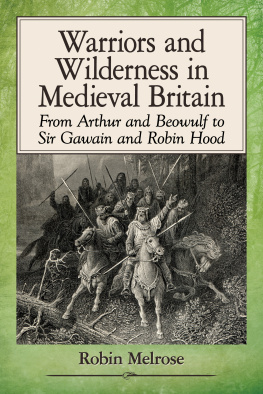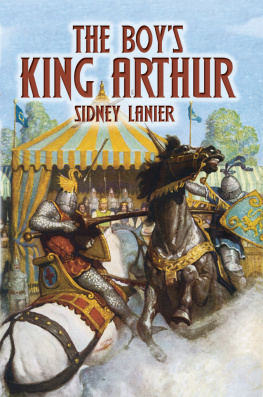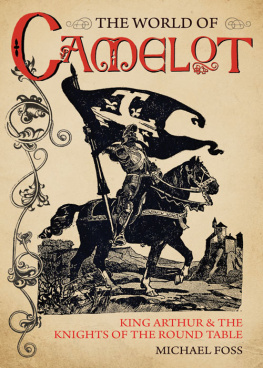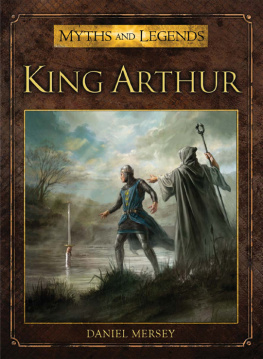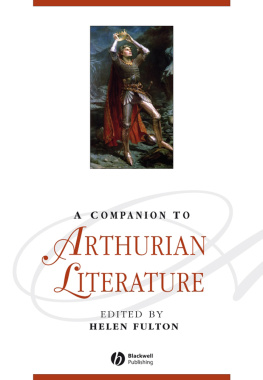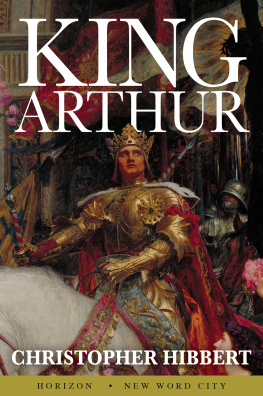Jesse Harasta graduated in 2009 from Syracuse University with a masters in Linguistic and Cultural Anthropology. Jesse is currently a doctoral student finishing his thesis, and he has had articles published in academic magazines and journals in both the United States and Great Britain.
Introduction

Howard Pyles illustration of King Arthur
King Arthur
King Arthur is one of the most famous names in history, and his name still evokes visions of fantasy, chivalry, bravery, and more even today. Arthur remains a pop culture fixture around the globe, made famous in various Arthurian tales written by writers like Chretien de Troyes. Arthur came to embody the ideals of the Middle Ages: strength, chivalry, bravery, and more. Along the way, his Excalibur sword, the Holy Grail, his queen, and more have all become household words.
Arthur has long been identified as a folk hero, and there are countless tales that comprise the Arthurian legend, but was there an actual person that the original stories were based on? People still search for the seeds of truth in the Knights of the Round Table, and the historical figure that inspired the Arthurian tales.
Of course, as with all great myths, and even those with a kernel of truth behind them, there is no "real" Arthur. Arthur is now comprised of the works written by diverse storytellers, most of which have built upon the ancient stories and possibly history. It is from there that a primordial seed of myth remains at the heart of all the retellings. At the same time, Arthurs story is one of transformation, as he is brought from the Middle Ages into the Renaissance and more modern times. And that story also includes the famous contemporaries in his stories and other important historical figures, like Geoffrey of Monmouth, the imprisoned Sir Thomas Mallory and Walt Disney.
When looking for the historical and mythical Arthur, scholars try to understand how the Arthur of these tales and of others like Disney's Sword in the Stone and Monty Python and the Holy Grail came to be. What are the origins of the Arthur legend and what can they tell people about the past? What is the historical basis for King Arthur, if any?
Robin Hood

th century illustration of Robin Hood and Marian
Robin Hood, Robin Hood, riding through the glen
Robin Hood, Robin Hood, with his band of men
Feared by the bad, loved by the good
Robin Hood, Robin Hood, Robin Hood. - Theme Song from The Adventures of Robin Hood
There are few characters in the English language more iconic than Robin Hood. Emerging out of the ballads of the High Middle Ages and surviving through numerous permutations to the present day, the green-clad archer has become an icon. Today he represents a playful, irreverent and cunning resistance to corruption and injustice, associated primarily with stealing from the rich and giving to the poor. Robin Hoods selfless acts of helping the masses at the expense of himself (by not keeping his treasure) have led to contemporary figures like Bill Gates being called Modern Day Robin Hoods, and when a British man robbed a bank in 2013 and handed out the money to homeless people before he was arrested and imprisoned, the name Robin Hood was naturally in the news once more.
Robin Hood is a celebrated folk hero and a kind of good thief, but the earliest stories about Robin Hood depict a far different character. The first Robin Hood was often a brutal and selfish yet also honorable figure, an anti-hero loved (perhaps paradoxically) by many social classes and loathed by authorities. When the notorious Gunpowder Plot was discovered at the beginning of the 17 th century, the Earl of Salisbury condemned Guy Fawkes and the conspirators for being Robin Hoods.
The transformation of Robin Hood over the centuries has left many scholars attempting to find the origins behind the original story. Like King Arthur, some have even sought a historical figure that might serve as the basis for Robin Hood, while others have sought out mythological origins to see if Robin Hoods character evolved out of a mythological figure. When looking for the historical and mythical figure, scholars try to understand how the Robin Hood of these tales and came to be. What are the origins of Robin Hood and what can they tell people about the past? What is the historical basis for Robin Hood, if any?
King Arthur and Robin Hood: The History and Folklore of Englands Most Famous Folk Legends comprehensively examines the history and stories of the Arthurian legend and everyones favorite bandit, while also looking at how they affected English history and became as popular as they are today. Along with pictures of important people, places, and events, you will learn about King Arthur and Robin Hood like never before.

Dante Gabriel Rossettis painting Arthurs Tomb (1855)
King Arthur
Chapter 1: Searching for Arthur

The Lady of the Lake gives Excalibur to King Arthur (1880)
There drew he forth the brand Excalibur,
And oer him, drawing it, the winter moon,
Brightening the skirts of a long cloud, ran forth
And sparkled keen with frost against the hilt:
For all the haft twinkled with diamond sparks,
Myriads of topaz-lights, and jacinth-work
Of subtlest jewellery. Lord Tennyson
On the high sea cliffs of Cornwall's North Coast there is a place steeped in legend, weathered by centuries, and, as is so often the case in such places, encrusted in tourist nick-knacks: the ruins of Tintagel Castle, the legendary place of the conception of King Arthur. Visitors arrives in the village of Tintagel - until recently named Trevana - and perhaps parks in the Middle Ages Parking Lot and walks by the Merlin's Slot Machines and numerous shops with wizard-shaped candles and glass dragons. This is the Arthuriana of today. It is both amusing and tacky, but Tintagel Castle and the legends born there have far deeper layers beyond the plastic swords and Disney knock-offs.








